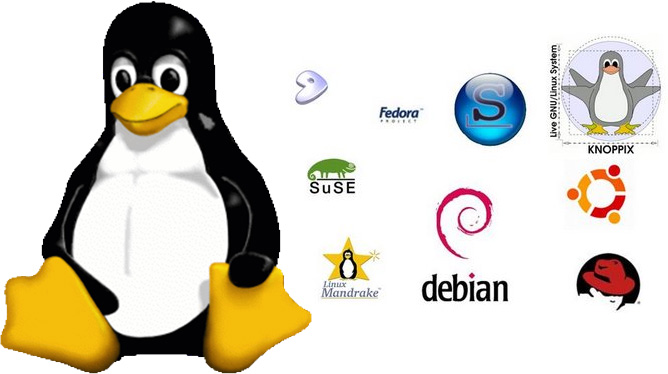
Linux is an increasingly popular operating system that is proving to be a viable alternative to Microsoft’s Windows and Apple’s Mac operating systems. Linux is open source, which means that it is developed by a tight-knit community of developers and designed to be permanently free of charge. Because of this, there are many different types of Linux operating systems available to users. Linux is PC-UNIX in which the kernel was created for PC/AT compatibles by Linus Torvalds of Finland. The name is derived from the kernel’s creator.

Although Linux is originally the kernel created by Linus, it does not function as an OS generally available with only the kernel. To function as an OS, various software applications must be combined with the kernel. Thus, the combination of the kernel and some application software supporting it for use as a OS is called a “distribution”.
A number of application software programs as well as the kernel is needed to run as an OS, but software applications necessary depend on the specific purpose of use or policy. This is the difference of distributions, so there are many distributions.
The biggest difference is the management method of a package (software) shown as follows:
Red Hat Linux, assembled by the company Red Hat, was a popular Linux based operating system until its discontinuation in 2004.
Red Hat Linux 1.0 was released on November 3, 1994. It was originally called “Red Hat Commercial Linux”. It was the first Linux distribution to use the RPM Package Manager as its packaging format, and over time has served as the starting point for several other distributions, such as Mandriva Linux and Yellow Dog Linux.
Red Hat Linux introduced a graphical installer called Anaconda, intended to be easy to use for novices, and which has since been adopted by some other Linux distributions. It also introduced a built-in tool called Lokkit for configuring the firewall capabilities.
As of Red Hat Linux 8.0, UTF-8 was enabled as the default character encoding for the system. This had little effect on English-speaking users, but enabled much easier internationalisation and seamless support for multiple languages, including ideographic, bi-directional and complex script languages along with European languages.
Red Hat Linux lacked many features due to possible copyright and patent problems. For example, MP3 support was disabled in both Rhythmbox and XMMS; instead, Red Hat recommended using Ogg Vorbis, which has no patents. MP3 support, however, could be installed afterwards, although royalties are required everywhere MP3 is patented. Support for Microsoft’s NTFS file system was also missing, but could be freely installed as well.
CentOS is a community-supported, free and open source operating system based on Red Hat Enterprise Linux. It exists to provide a free enterprise class computing platform and strives to maintain 100% binary compatibility with its upstream distribution. CentOS stands for Community ENTerprise Operating System. CentOS developers use Red Hat’s source code to create a final product very similar to Red Hat Enterprise Linux. CentOS is available free of charge. Technical support is primarily provided by the community via official mailing lists, web forums, and chat rooms.
CentOS version numbers have two parts, a major version and a minor version. The major and minor version numbers respectively correspond to the major version and update set of Red Hat Enterprise Linux from which the source packages used to build CentOS are taken. For example, CentOS 4.4 is built from the source packages from Red Hat Enterprise Linux 4 update 4.
Advantage:
Fedora is another example of a Linux distribution. In appearance, Fedora’s desktop and standard operations are similar to those of Ubuntu and Kubuntu. Fedora is used primarily for older PCs due to its limited system requirements. The term fedora was in use as early as 1891. The fedora came into use in about 1919. Fedoras can be found in nearly any color imaginable, but black, grey, tan, brown, and red are the most popular.
Advantage:
The most popular and widely used Linux distribution is called “Ubuntu.” Ubuntu is aimed at bringing Linux to casual computer users and is
comparable in features to Microsoft’s Windows operating system. Ubuntu is a computer operating system based on the Debian Linux distribution. Ubuntu focuses on usability and security. The Ubiquity installer allows Ubuntu to be installed to the hard disk from within the Live CD environment, without the need for restarting the computer prior to installation.
Ubuntu comes installed with a wide range of software that includes OpenOffice, Firefox, Pidgin, Transmission, GIMP, and several lightweight games (such as Sudoku and chess). Ubuntu allows networking ports to be closed using its firewall, with customized port selection available. It offers support for more than 46 languages. Ubuntu can also run many programs designed for Microsoft Windows (such as Microsoft Office), through Wine or using a Virtual Machine
Reference: http://studyjava.org/
میثم سعیدی